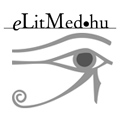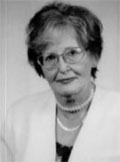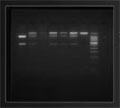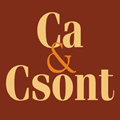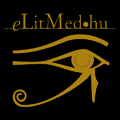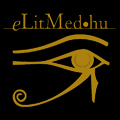The eLitMed.hu medical portal uses computer cookies for convenient operation. Detailed information can be found in the Cookie-policy.
Ca&Bone - 2002;5(01-02)
Content
[Vitamin D receptor gene BsmI polymorphism in rheumatoid arthritis and associated osteoporosis]
[Rheumatoid arthritis is frequently associated with secondary osteopenia or osteoporosis. Gene polymorphisms, such as the BsmI polymorphism of the vitamin D receptor gene are likely to be be involved in the pathogenesis of osteoporosis. However, very little information is available on the role of the BsmI polymorphism in rheumatoid arthritis or in arthritisassociated metabolic bone disorders. Here the authors review international data on vitamin D receptor gene polymorphisms and their relationship with bone metabolism.The authors emphasize that more detailed research is needed to clarify the relationship between these polymorphisms and rheumatoid arthritis.]
[Vitamin D receptor gene BsmI polymorphism in rheumatoid arthritis and associated osteoporosis - Experimental data]
[AIM: Rheumatoid arthritis (RA) is commonly associated with secondary osteoporosis.The BsmI polymorphism of the vitamin D receptor (VDR) gene has been implicated in the pathogenesis of osteoporosis. However, little data is available on the relationship between rheumatoid arthritis and the BsmI polymorphism. In this study, Hungarian frequencies of BsmI polymorphism genotypes were compared with those found in other countries. METHODS: In this study, 64 RA patients and 40 healthy controls were tested for VDR gene BsmI polymorphism genotypes.The frequencies of the B and b alleles were correlated with densitometric and laboratory markers of bone metabolism as well as with laboratory markers of arthritis. RESULTS: Among control subjects, the frequency of the BB genotype (27,5%) was relatively higher than in other European populations. In RA patients with secondary osteopenia/osteoporosis the BB genotype was rarer, while the bb was more common than in control subjects. Markers of bone metabolism showed that the presence of the B allele in RA patients was associated with a lower bone mineral density and an increased bone loss, while the bb genotype was associated with a higher bone mineral content. An increased osteoclast and osteoblast activity was observed in patients with the B allele, as determined by biochemical markers of bone metabolism. Rheumatoid factor titer, an important laboratory marker of disease progression in RA, was significantly higher in bb patients compared to patients carrying the B allele. CONCLUSION: Our data suggest that the imbalance in B and b allele expression may be involved in the pathogenesis of osteoporosis and perhaps of rheumatoid arthritis.]
[Evaluation of bone mineralization in cow’s milk sensitive children]
[BACKGROUND - Patients with cow's milk allergy (CMA) form a potential risk group for osteopenia, because their milk-free diet usually has a low calcium content.The study analyses various parameters of bone mineralization in CMA children. PATIENTS AND METHODS - Twenty-seven CMA patients (mean age: 4.3 years, range: 3-8 years) were enrolled in the study.Transient sensitivity to cow's milk was observed in 20 of 27 patients. During the milk-free diet period (mean duration 11.8 months) children were fed by extensively hydrolysed or soy-based formulas. Seven patients still required a cow's milk free diet at the time of the study. Serum levels of Na, K, Cl, Ca, P and Mg ions, as well as of alkaline phosphatase (AP), parathyroid hormone (PTH), osteocalcin and beta-crosslaps were determined for all 27 patients.The values were compared to those of 20 healthy age-matched controls. Bone mineral densities (BMDs) of CMA patients were also measured. RESULTS - The AP and PTH levels were higher in CMA patients than in the control group (AP: 610.2 U/l vs 499.7 U/l, p<0.01; PTH: 1.56 pmol/l vs 0.83 pmol/l, p<0.03), but all values fell in the normal range.The osteocalcin level was similar in the two groups, and the beta-crosslaps was lower in CMA patients than in the controls (0.92 vs 1.47 ng/ml, p<0.001).There was a positive correlation between both AP and osteocalcin and AP and beta-crosslaps levels.The mean Z score of bone mineral density in patients with CMA was -0.6. In 10 cases the Z score was below -1, which was associated with a significantly elevated PTH level compared to the group of patients with a Z score above - 1 (2.24 pmol/l vs 1.16 pmol/l, p<0.03). CONCLUSION - In children with CMA on a cow's milk free diet, slight disturbances of bone mineralization were observed, therefore, osteodensitometric check-up of these children is recommended.]
[Epidemiologic features of nephrolithiasis in Hungary, based on morbidity data on hospitalized patients]
[AIM - To examine geographic, gender and age differences in the morbidity of nephrolithiasis (NL) in Hungary based on data from hospitalised NL cases. PATIENTS AND METHODS:The descriptive epidemiologic study involved settlements with 2,000 or more inhabitants and applied a spatial accumulation analysis to reveal any significant differences from the national average. Standardized morbidity ratios (SMRs) were calculated by indirect standardization and differences were tested by the c2 test. RESULTS - In the period between 1997 and 1999, a significant spatial accumulation of NL morbidity in the 0-100 year age group without stratification by gender was observed in Zala,Vas, Nógrád and Bács-Kiskun counties. The male:female ratio was 1:0.98.The highest morbidity surplus was found in the 35-64 age group, which in females extended into the over 65 year age group.There were 158.33 NL cases per 10,000 hospital discharges. CONCLUSION - Morbidity data of hospitalised NL patients show significant geographic differences. In contrast to literature data, no gender differences were found.The causes of the observed geographic, age and gender differences require further investigations.]
[Statement of the Hungarian Osteoporosis and Osteoarthrology Society on hormone replacement therapy in osteoporosis]
[Statement of the Hungarian Osteoporosis and Osteoarthrology Society on hormone replacement therapy in osteoporosis 2002;5(01-02)]
[Bibliography of Hungarian literature on calcium and bone metabolism, 2001]
[Bibliography of Hungarian literature on calcium and bone metabolism, 2001]
[Postgradual education for the assistants of the Osteoporosis Centers]
[Postgradual education for the assistants of the Osteoporosis Centers, 2002;5(01-02)]
1.
Clinical Neuroscience
[Headache registry in Szeged: Experiences regarding to migraine patients]2.
Clinical Neuroscience
[The new target population of stroke awareness campaign: Kindergarten students ]3.
Clinical Neuroscience
Is there any difference in mortality rates of atrial fibrillation detected before or after ischemic stroke?4.
Clinical Neuroscience
Factors influencing the level of stigma in Parkinson’s disease in western Turkey5.
Clinical Neuroscience
[The effects of demographic and clinical factors on the severity of poststroke aphasia]1.
2.
3.
4.
5.
